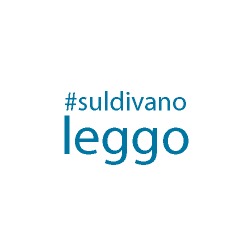one
Here is what I know:
My name is Budo.
I have been alive for five years.
Five years is a very long time for someone like me to be alive.
Max gave me my name.
Max is the only human person who can see me.
Max’s parents call me an imaginary friend.
I love Max’s teacher, Mrs. Gosk.
I do not like Max’s other teacher, Mrs. Patterson.
I am not imaginary.
two
I am lucky as imaginary friends go. I have been alive for a lot longer than most. I once knew an imaginary friend named Philippe. He was the imaginary friend of one of Max’s classmates in preschool. He lasted less than a week. One day he popped into the world, looking pretty human except for his lack of ears (lots of imaginary friends lack ears), and then a few days later, he was gone.
I’m also lucky that Max has a great imagination. I once knew an imaginary friend named Chomp who was just a spot on the wall. Just a fuzzy, black blob without any real shape at all. Chomp could talk and sort of slide up and down the wall, but he was two-dimensional like a piece of paper, so he could never pry himself off. He didn’t have arms and legs like me. He didn’t even have a face.
Imaginary friends get their appearance from their human friend’s imagination. Max is a very creative boy, and so I have two arms, two legs, and a face. I’m not missing a single body part and that makes me a rarity in the world of imaginary friends. Most imaginary friends are missing something or other and some don’t even look human at all. Like Chomp.
Too much imagination can be bad, though. I once met an imaginary friend named Pterodactyl whose eyes were stuck on the ends of these two gangly, green antennas. His humans friend probably thought they looked cool, but poor Pterodactyl couldn’t focus on anything to save his life. He told me that he constantly felt sick to his stomach and was always tripping over his own feet, which were just fuzzy shadows attached to his legs. His human friend was so obsessed with Pterodactyl’s head and those eyes that he had never bothered to think about anything below Pterodactyl’s waist.
This is not unusual.
I’m also lucky because I’m mobile. Lots of imaginary friends are stuck to their human friends. Some have leashes around their necks. Some are three inches tall and get stuffed into coat pockets. And some are nothing more than a spot on the wall, like Chomp. But thanks to Max, I can get around on my own. I can even leave Max behind if I want.
But doing so too often might be hazardous to my health.
As long as Max believes in me, I exist. People like Max’s mother and my friend Graham say that this is what makes me imaginary. But it’s not true. I might need Max’s imagination to exist, but I have my own thoughts, my own ideas, and my own life outside of him. I am tied to Max the same way that an astronaut is tied to his spaceship by hoses and wires. If the spaceship blows up and the astronaut dies, that doesn’t mean that the astronaut was imaginary. It just means that his life support was cut off.
Same for me and Max.
I need Max in order to survive, but I’m still my own person. I can say and do as I please. Sometimes Max and I even get into arguments, but nothing ever serious. Just stuff about which TV show to watch or which game to play. Bu it behooves me (that’s a word that Mrs. Gosk taught the class last week) to stick around Max whenever possible, because I need Max to keep thinking about me. Keep believing in me. I don’t want to end up out of sight, out of mind, which is something Max’s mom sometimes says when Max’s dad forgets to call home when he is going to be late. If I am gone too long, Max might stop believing in me, and if that happens, then poof.
Matthew Dicks, Memoirs of an Imaginary Friend, New York: St. Martin’s Press, 2012
